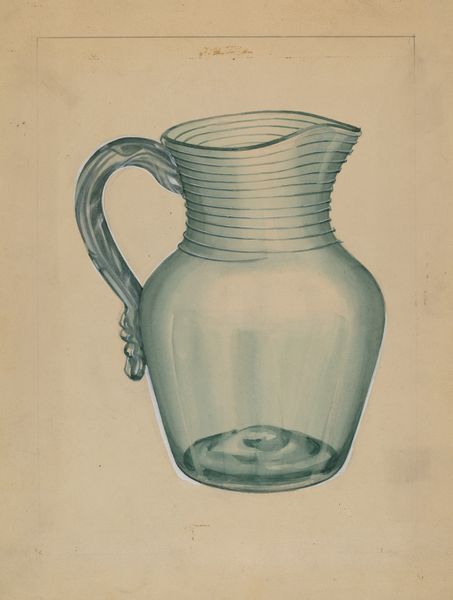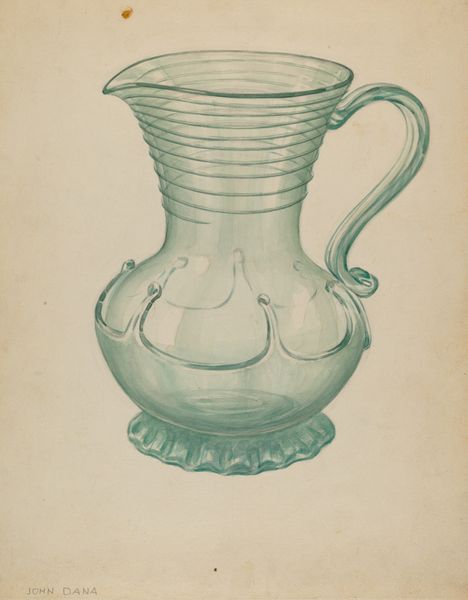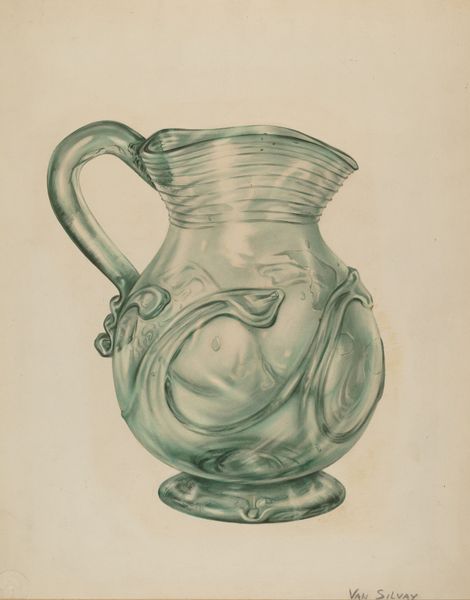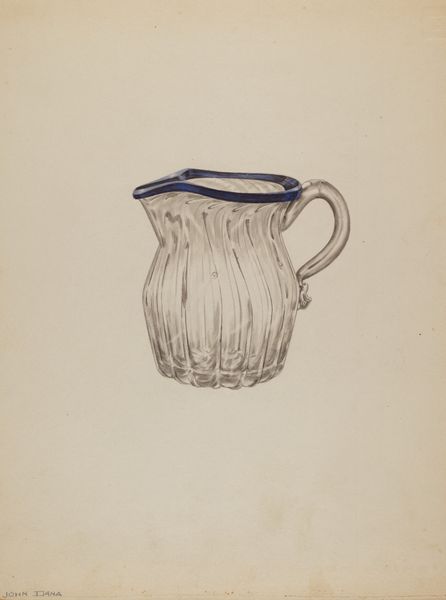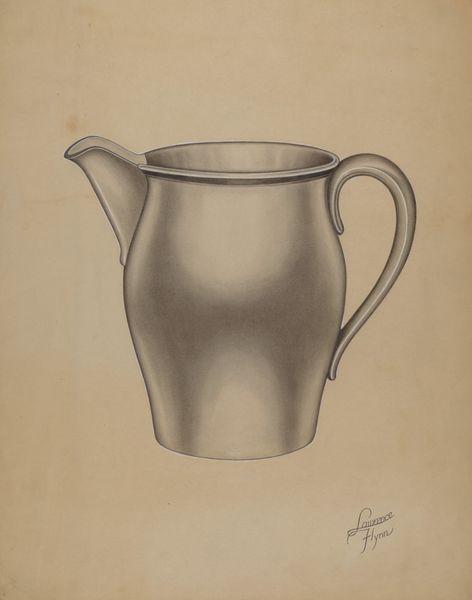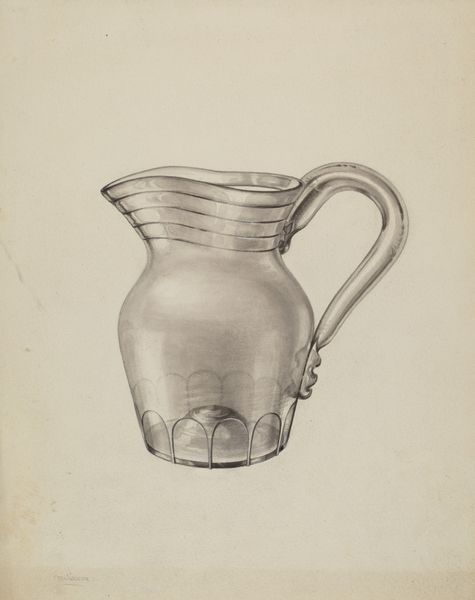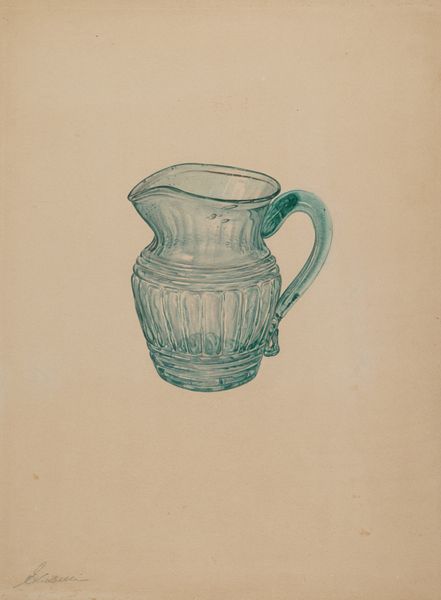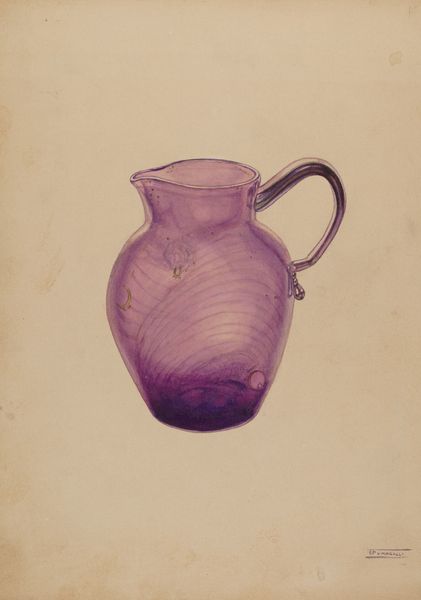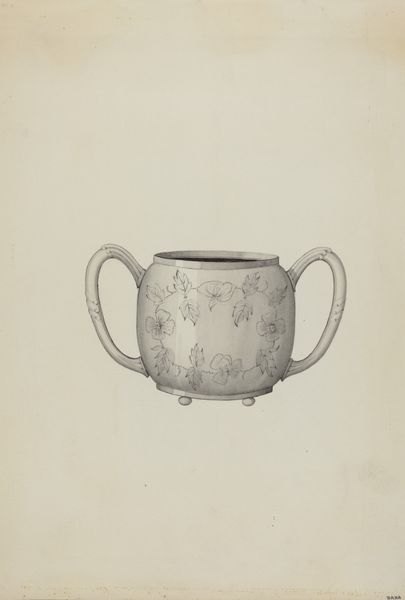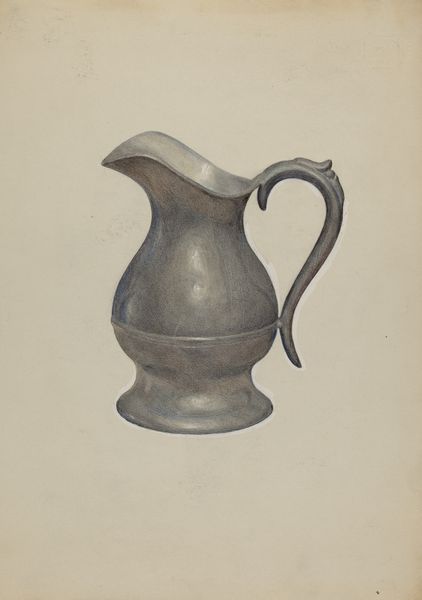
drawing, ink
#
drawing
#
caricature
#
ink
#
pencil drawing
#
geometric
#
decorative-art
Dimensions: overall: 27.8 x 22.9 cm (10 15/16 x 9 in.) Original IAD Object: 10" high; 7 3/4" wide
Copyright: National Gallery of Art: CC0 1.0
Curator: This drawing, rendered in ink, depicts a silver-plated water pitcher and dates to around 1936. It comes to us from the designs of Ellen Duncan. Editor: My first thought is elegance and utility. The shimmering quality captured in a black-and-white drawing is striking. There is such care taken on how this piece can bring luxury to an everyday tool. Curator: Absolutely, luxury designed for everyday life. Silver plating itself speaks to that. It gives the impression of immense value without actually requiring solid silver. This reflects an interesting moment in social history where consumer goods became more accessible, although the true luxury of the material remains just out of grasp. Editor: It's all about accessible aspirations! The heart shapes add a fascinating dimension, don’t you think? Almost mass-produced romanticism. The naturalistic handle shows the decorative impulse mingling with geometric form. It is quite dynamic considering it's simply a pitcher. Curator: I agree. The choice of geometric, almost Art Deco elements combined with those organic, fluid lines in the handle does create a lovely tension. From a purely material perspective, think about the skill involved in silver plating a base metal—the labor, the chemistry, the transformation. These vessels had to be sturdy enough for continuous use, so design choices were also informed by manufacturing techniques. Editor: And design informed by consumption habits and broader tastes. The object like this would signal to society a certain refinement and upward mobility for whoever would display this in their homes. What I'm drawn to most is how utilitarian art also served this really performative social role. Curator: Right. An item like this sits squarely in the tradition of applied arts and how they're integrated into daily routines. I appreciate the way it blurs boundaries and forces one to reconsider divisions that have historically separated the so-called high arts and the world of everyday manufactured goods. Editor: I am fascinated by how, through the artist's hand, and mass production, an ordinary vessel can become such a powerful cultural emblem. Curator: Indeed, examining how an everyday pitcher became, and continues to be, a signifier of value and status offers a valuable glimpse into history. Editor: And I find myself newly attentive to my own water pitcher now!
Comments
No comments
Be the first to comment and join the conversation on the ultimate creative platform.
